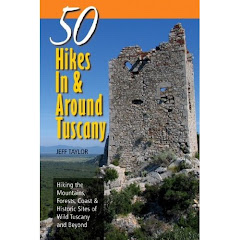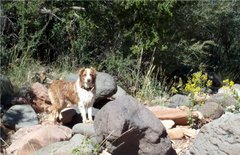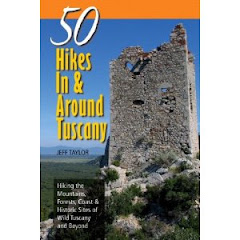Distance: 1.3 miles (2.0 km)
Difficulty: Easy
Elevation: 3 - 6 feet (1-2 m)
Time of Year: December - April
 |
| Double-crested cormorant hanging out on the railing |
Florida is not exactly known for its hiking. The state is extremely flat and much of it is under water. Combine that with the summer heat and mosquitoes and it isn't the place people flock to hit the trail. But, there are some hidden gems where you can get away from the crowds and enjoy a jaunt through sawgrass prairies, cypress swamps, and pine forests. But, if you are more of a casual tourist looking for a short, easy hike that offers amazing views of wildlife and a taste of the Everglades, then the Anhinga Trail and Gumbo Limbo Loop are the place for you.
 |
| Florida Gar in the canal |
If solitude is what you are looking for, then this isn't the place. It is one of the most popular tourists spots in the Everglades due to its short distance, ease of seeing wildlife, and the fact that it is the first stop on the main road after the visitor center. But, as with most places, if you get an early enough start, you can still have the place to yourself. If you arrive at 8am or so, most of the tourists will still be at their hotel in Homestead having breakfast. To get here, simply drive into Everglades National Park on the main road and at the first turnoff after the visitor center turn left. It is clearly labeled. Drive to the end of the road. There is a small visitor center/gift shop and restrooms at both trailheads.
 |
| Marsh at end of the boardwalk with anhinga drying its wings (left) |
The Anhinga Trail is a 0.4 mile roundtrip that starts off following an old road bed, with a canal dug out to provide the limestone road bed material. These are known as "borrow pits" since they needed to borrow the land to pile up enough material to make a dry road in an otherwise flooded landscape. These borrow pits are a great place to look for alligators, Florida gar, and turtles.
 |
| Alligator hanging out in the lily pads |
During the dry season, when much of the water disappears from the surrounding sawgrass prairies, much of the wildlife will congregate here in the deeper waters of the pits. Thus, this area will have an extremely high concentration of animals.The trail follows the road bed and canal, with many birds just hanging out along the edges of it, then arrives at a boardwalk loop that will take you out into the marsh.
 |
| Green-backed heron |
The boardwalk enters a wetland dominated by willows, pond apples, and cattails. The pond apples are obvious as large fruit hanging from trees with large prop-roots. While edible, they are not really considered tasty. Although it is said the alligators like them. There will be a myriad of birds along the way including lots of double-crested cormorants, anhinga drying their wings, various egret and heron species, and alligators lazily cruising across the ponds. Bring your binoculars, telephoto lens, and bird ID book!
 |
| Gumbo Limbo is also known as the tourist tree or sunburn tree due to its red peeling bark |
Upon completing the boardwalk loop and returning to the visitor center, loop for the 0.8 mile Gumbo Limbo Trail. This trail is an entirely different habitat, as it is a tropical hardwood hammock. Elevated a foot or two above the surrounding sawgrass prairies, the trees here can get their roots out of the water. Here the habitat is that of a dense forest, containing many tree species of tropical origin, such as its namesake the Gumbo Limbo tree, as well as, West Indian mahogany, poisonwood, royal palms, and many others.
 |
| A rare royal palm rises above the hardwood hammock |
The trail offers a cornucopia of plant species to look at, a lot of different forest birds that are both of tropical/Caribbean origin and familiar northern migrants who are spending the winter in Florida. Along the way, there will be holes in the exposed limestone surface filled with water. These are called "solution holes" and they form when acids from the decaying leaves eat into the limestone. During the dry season, these become homes for young alligators, fish, and other animals seeking water.
 |
| Walking down the Gumbo Limbo Trail |
Since mosquitoes prefer shady locations during the heat of the day, these hammocks are a refuge for them. Thus, during the dry season, if there are any mosquitoes anywhere, this is where you will find them. There were not too many of them in December and they didn't bother us too much as long as you kept moving. It was only when I stopped to take a picture of some bird or interesting plant that I would hear than infamous whine in my ear.
 |
| A tri-colored heron |
If you make a visit to Everglades National Park, then the Anhinga Trail and Gumbo Limbo Trail are a must see along the way. The hike is not long, but Florida sure knows how to pack in a lot of beauty and wildlife into a small area. Visit in the dry season when the mosquitoes, heat, and humidity are at a minimum. But, realize that that is when everyone else is going. So, get an early start to beat the crowds and you will not be disappointed.









